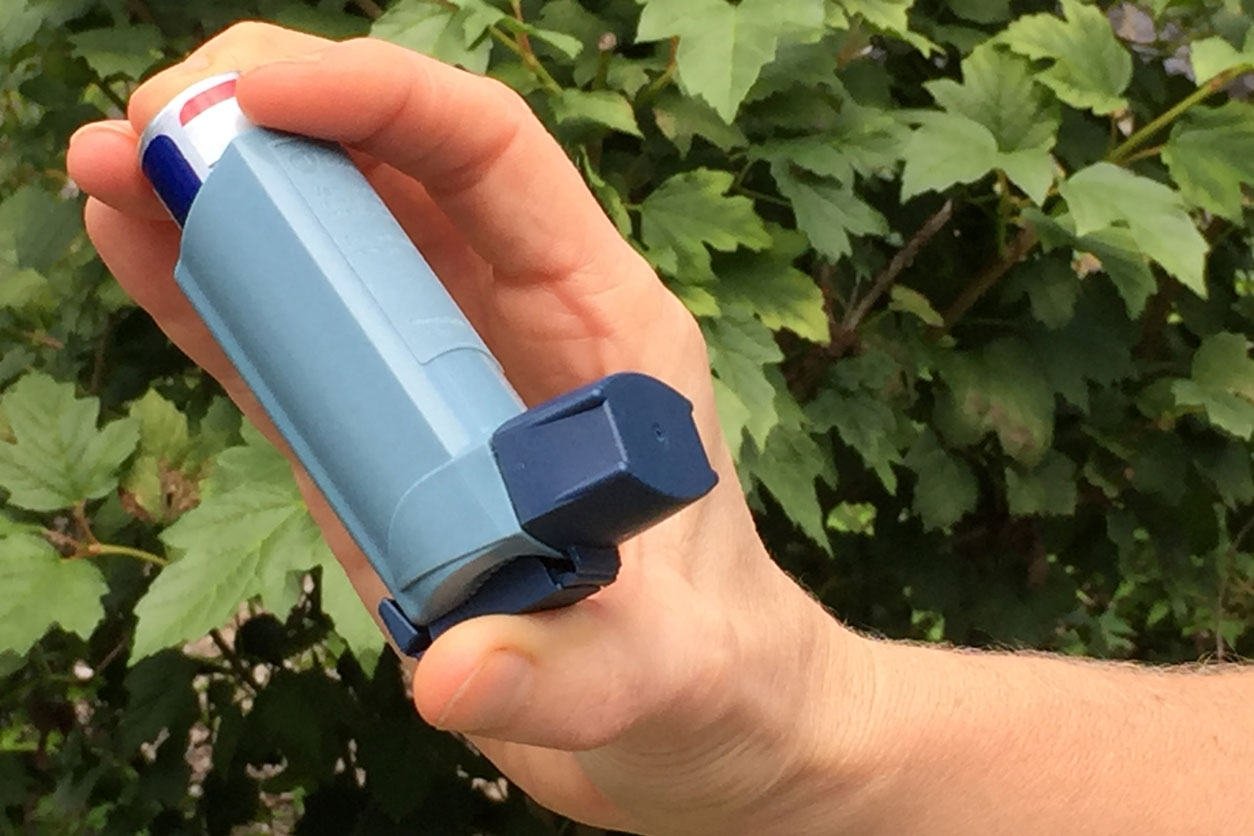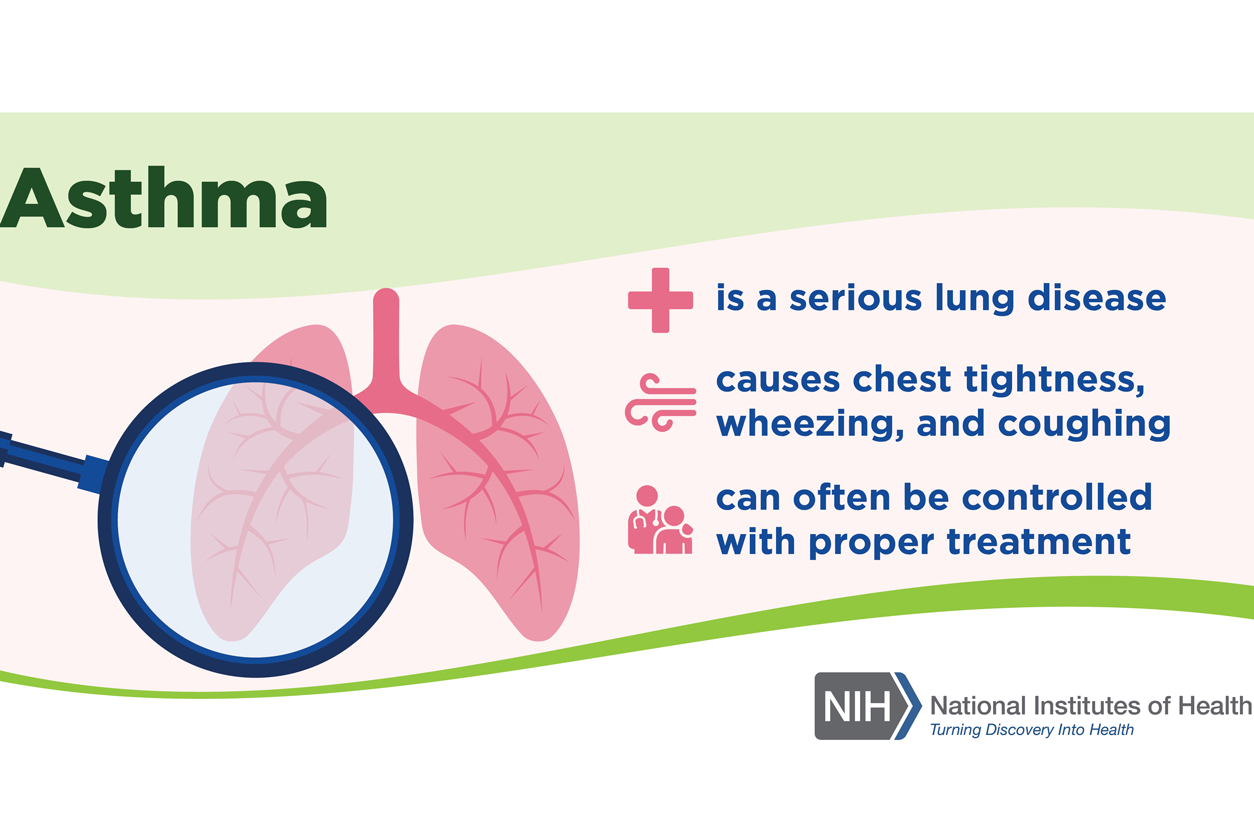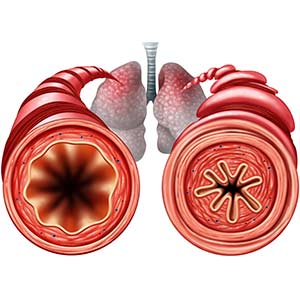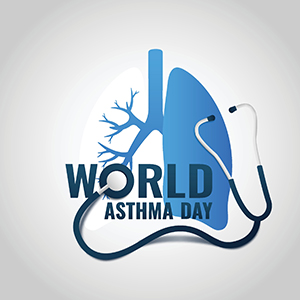On World Asthma Day, May 3, the National Institutes of Health (NIH) reaffirmed its commitment to biomedical research aimed at preventing the onset of asthma, understanding its underlying causes, and improving the treatment of it. This chronic airway disease, which is characterized by periodic worsening of inflammation that can make it hard to breathe, affects more than 25 million people in the United States, including more than five million children. Left untreated, it can be life-threatening.
Although scientists have made substantial progress in understanding asthma diagnosis, management, and treatment, therapies to permanently improve breathing for those who have asthma remain elusive. Researchers around the globe are working steadily toward this goal while they seek to better understand and find new ways to manage the disease. They also are continuing research on the underlying causes of disparities in the incidence, care, and prevention of the disease. On the heels of recently updated management and treatment guidelines, researchers anticipate a brighter future for people living with asthma.
 An asthma inhaler. (Photo courtesy of NIAID)
An asthma inhaler. (Photo courtesy of NIAID)Three NIH institutes primarily support and conduct studies on asthma — the National Heart, Lung, and Blood Institute (NHLBI); the National Institute of Allergy and Infectious Diseases (NIAID); and the National Institute of Environmental Health Sciences (NIEHS). Other NIH institutes and centers also support and conduct asthma research. NIH scientists and grantees made important advances in understanding, treating, and managing asthma in 2021, which are briefly highlighted below.
Asthma and COVID-19
An NHLBI-funded study showed that during the pandemic, asthma attacks, also known as asthma exacerbations, significantly decreased in a large group of children and adolescents, compared to the year before the pandemic. The study also found that telehealth visits among these patients increased dramatically during this time. The study included nearly 4,000 participants aged 5-17 years with a previous diagnosis of asthma. Researchers believe a better understanding of the factors that contributed to these improved outcomes could lead to better asthma control in all children and adolescents because researchers noted no racial or ethnic differences in health outcomes in this population.
Also, an NIAID-funded study found that asthma does not increase the risk of becoming infected with SARS-CoV-2, the virus that causes COVID-19. This finding came from a six-month household survey of more than 4,000 children and adults conducted between May 2020 and February 2021.
Asthma disparities
Researchers have known for decades that social determinants of health — conditions such as housing, neighborhood, education, income, and health care access — can affect the quality of life and asthma-related health outcomes of people living with the disease. NIH scientists are now reporting new advances in understanding the relationship between social determinants of health and asthma.
Black and Hispanic children who live in low-income urban environments in the United States are at particularly high risk for asthma attacks. These children tend to be underrepresented in large trials of new biologic therapies for asthma.
In a recent NIAID-supported clinical trial, the monoclonal antibody mepolizumab decreased asthma attacks by 27% in Black and Hispanic children and adolescents who have a form of severe asthma, are prone to asthma attacks, and live in low-income urban neighborhoods.
 (Image courtesy of NIH)
(Image courtesy of NIH)A study by NHLBI-funded investigators demonstrated the importance of housing interventions in improving the health of children with asthma. Poor quality housing is associated with a high level of asthma triggers — including mold, cockroach, mouse, and dust mite allergens — that can pose a health threat to children with asthma. The study showed the feasibility of using targeted interventions — including better pest management, improved ventilation, and moisture reduction — to achieve healthy housing. It showed that such interventions can result in reduced symptoms and hospitalizations due to asthma.
Environmental exposures and asthma
Researchers have known for years that asthma can be triggered by substances in the indoor and outdoor environment. New research shows that exposure to some asthma triggers might even occur before birth.
In an NIH-supported study that included grant support from NIEHS and NHLBI, researchers reported that prenatal exposure to tiny air pollution particles significantly increased the risk for developing asthma in children. The study, which analyzed data from two different study cohorts, focused on a group of mothers and their children, mostly Black or Hispanic, in the Boston area who lived near major roadways with heavy traffic. It found that more than 18% of the children who were exposed to high levels of these so-called ultrafine particles in the womb developed asthma in their preschool years, compared with 7% of children overall in the United States.
An NIEHS clinical study will assess how environmental factors affect disease progression in nonsmoking adults who have moderate or severe asthma. The study will focus on the microbiological and genetic factors associated with atopic asthma, also known as allergic asthma, which is triggered by pollen, dust mites, and other allergens. A better understanding of these data might lead to improved treatments for people with this type of asthma, researchers say.
Climate change and asthma
Studies have shown that climate change can increase air pollutants such as ground-level ozone, fine particulates, wildfire smoke, and dust, and that these pollutants can exacerbate asthma. Climate change can also affect the production, distribution, and severity of airborne allergens.
NIEHS, NHLBI, and other NIH institutes and centers are leading the NIH Climate Change and Health Initiative. This is a cross-cutting NIH effort to reduce health threats — such as asthma — that can develop or worsen because of climate change. The initiative will look at these threats across the lifespan and find ways to build health resilience in individuals, communities, and nations around the world. A strategic framework for the initiative will help guide NIH investments in this area.
An NIEHS-funded study provides examples of how extreme weather events can affect asthma outcomes. For example, as heat waves and droughts become more frequent and prolonged, the risk of large wildfires will likely increase, resulting in poor air quality that makes it more difficult to control asthma. Other climate change events can lead to longer and more intense pollen seasons, whereas mold and dampness in homes may cause asthma to develop or worsen pre-existing cases.









